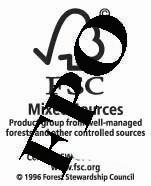







DANNY KOFKE
foreword by L. C. (BUSTER) EVANS
foreword by L. C. (BUSTER) EVANS
Copyright © 2026 by Solution Tree Press
Materials appearing here are copyrighted. With one exception, all rights are reserved. Readers may reproduce only those pages marked “Reproducible.” Otherwise, no part of this book may be reproduced or transmitted in any form or by any means (electronic, photocopying, recording, or otherwise) without prior written permission of the publisher. This book, in whole or in part, may not be included in a large language model, used to train AI, or uploaded into any AI system.
555 North Morton Street Bloomington, IN 47404
800.733.6786 (toll free) / 812.336.7700 FAX: 812.336.7790
email: info@SolutionTree.com SolutionTree.com
Visit go.SolutionTree.com/teacherefficacy to download the free reproducibles in this book. Printed in the United States of America

LCCN Control Number: 2025007532
ISBN: 979-8-89374-055-4
Solution Tree
Cameron L. Rains, CEO
Edmund M. Ackerman, President
Solution Tree Press
Publisher: Kendra Slayton
Associate Publisher: Todd Brakke
Acquisitions Director: Hilary Goff
Editorial Director: Laurel Hecker
Art Director: Rian Anderson
Managing Editor: Sarah Ludwig
Copy Chief: Jessi Finn
Production Editor: Madonna Evans
Proofreader: Elijah Oates
Text and Cover Designer: Kelsey Hoover
Content Development Specialist: Amy Rubenstein
Associate Editor: Elijah Oates
Editorial Assistant: Madison Chartier
Tracy—you have always believed in my outlandish dreams and have been my biggest fan and greatest supporter. Thank you for being you!
Ava and Ella—you both are such blessings to me, and my greatest accomplishment is being your dad. I am so proud of the young women you have become.
Mom—thank you for your unconditional love and support. We have been through so much, and your examples have shown me what it means to be wealthy.
Kevin—thank you for giving me the opportunity to help thousands of educators have better retirements. After searching many years, I now have my dream job thanks to you!
The Solution Tree team—Claudia, Amy, and Madonna, you have all put in countless hours making this book the best it can be. Thank you for your dedication and support!
All teachers—I know how difficult your jobs can be. Thank you for choosing to be educators and making the world a better place. I hope my book can help you on your journeys.
Solution Tree Press would like to thank the following reviewers:
Taylor Bronowicz
Sixth-Grade Math Teacher
Albertville Intermediate School
Albertville, Alabama
Doug Crowley Assistant Principal DeForest Area High School
DeForest, Wisconsin
Kelly Hilliard
GATE Mathematics Instructor NBCT
Darrell C. Swope Middle School
Reno, Nevada
Teresa Kinley Humanities Teacher
Calgary, Alberta, Canada
Janet Nuzzie
District Intervention Specialist, K–12
Mathematics
Pasadena ISD
Pasadena, Texas
Visit go.SolutionTree.com/teacherefficacy to download the free reproducibles in this book

Danny Kofke is director of training and outreach for the Southern Education Retirement Consortium. He is a former schoolteacher who taught for eighteen years before leaving the classroom. Danny taught prekindergarten, kindergarten, first-grade, and special education classes.
This is Danny’s sixth book. His everyday approach to handling money has led him to appear on numerous television shows, including Fox & Friends, CBS’s The Early Show, CNN’s Newsroom, The 700 Club, and The Clark Howard Show. Danny has also been interviewed on more than six hundred radio shows and featured in a number of publications, including USA Today , The Wall Street Journal , Money Magazine , and Reader’s Digest . He wants to show others that if this former schoolteacher can do well financially, they can too!
Danny received a bachelor’s degree in elementary education from Florida Atlantic University.
To book Danny Kofke for professional development, contact pd@SolutionTree.com.
By L. C. (Buster) Evans
Danny Kofke nails it in his newest book, Where to Spend, Where to Save: A Teacher’s Guide to Managing Your Finances. Danny has put together this outstanding guide on a topic we know is important but don’t always talk about. Teachers can do well financially despite the horrible and untrue myth that they cannot achieve financial wealth comparable to those in other professions because they decided to be teachers. The eight chapters in this book create a blueprint for financial success for teachers or even readers from other occupations. Getting just one step right in your financial journey can make a difference, but those who incorporate each of the topics into their lifestyle early in their career will enjoy compounding financial success while making a difference in the lives of thousands of students.
From a very early age, the philosophy regarding financial resources taught me to follow the give, save, and spend sequence of budgeting money. Though not in this particular order, this book provides clear guidance on principles addressing where teachers should spend, where they can save, and what they can ultimately give as they leave a legacy beyond the everlasting influence of the classroom.
Some people believe that there is a looming retirement crisis facing the United States and Canada. There may well be, but it certainly doesn’t have to be that way for teachers who establish a financial plan surrounding the principles outlined in this book. Each year, the retirement system that I am fortunate to lead will process approximately 7,000 retirement applications. Some 3,500 of these soon-to-be
retirees will receive retirement counseling guidance. Over time, it is clear that those who are most comfortable in their retirement decisions are those who know they will have enough financial income in retirement.
We live in a world where it seems it is too easy to spend. Online shopping has become so simple. We have our online shopping cart, wish list, save for later, and pay-over-time options. We have recurring subscription charges for online services, technology applications, and even games that we are seemingly addicted to. It seems that everyone wants some of our money. Creating a budget, and then living within the guardrails of that budget, is a fantastic first step to generating future wealth.
I am so glad that this book addresses the uncomfortable topic of debt. Two things that I believe are important in that chapter include recognizing the difference between good and bad debt and eliminating debt. The definition of debt that is used in this book is one of the best that I have heard—“future income spent today.” For the reader with mounds of debt choking the life out of their financial contentment, Danny provides a couple of time-proven strategies for paying down debt so that other financial goals, like saving and investing, can be accomplished.
In 2018, one of the United States’ leading financial speakers and authors released the results of a study that identified what occupational groups were most likely to become millionaires (Ramsey Solutions). It was no surprise that engineers and accountants topped the list. What was a big surprise was the occupational group that was third most likely to become millionaires—teachers! Even above physicians and attorneys, teachers were found to be more likely to become millionaires over time. In drilling down into this startling fact, it makes sense that teachers—who learn forced scarcity early in their careers—establish a process for handling their financial resources. Each of these critically important chapters can help ensure that more educators reach their goals of eventual financial independence.
While reading this book is a great step toward thriving financially, it isn’t the only step. Danny has included a Homework tool following each chapter. Completing these Homework exercises will lead to a greater likelihood of adopting the principles covered in this book. The third step is execution. Implementing the suggestions found in this book as an individual is great. For those who have a life partner, however, working to stay on the same page in money management can yield results beyond one’s initial expectations.
I speak to thousands of active and retired educators each year. I sincerely tell them—with a bit of levity included—that “retired educators are the happiest people I know!” Working in a profession where they gain lasting memories of making a difference in the lives of those they’ve taught is phenomenally rewarding. Then, having a pension—as well as a six- or seven-figure (or more) contribution account—is just part of the reason readers of this book can one day retire comfortably. In their career, they got the financial part of the equation working for them along the way.

Like many educators, I had a special teacher who inspired me to become one. I knew I wanted to be a teacher after having Mr. Stutzke in ninth-grade civics. Even though that was almost thirty-five years ago, I still remember his motto of “stand and deliver.” Whenever one of us students had something to say in his class, we had to stand up beside our desk and say it. This practice forced me to overcome something many are fearful of. Glossophobia—the fear of public speaking—is a common phobia that is believed to affect almost 75 percent of the population (Black, 2019). As an adult, I present to rooms of hundreds of people and am not afraid of doing so. I have Mr. Stutzke to thank for helping me with this!
After becoming a teacher, I married a fellow teacher—my wife, Tracy. Something we heard at that time was that it would be difficult to do well financially on two schoolteachers’ salaries. Twenty-five years, two daughters, and a few moves later, I can attest it has not been easy, but teachers can do well financially. And in this book, I will show you how!
Financial struggles are not unique to educators. Many people struggle financially, as shown by the following facts.
• Fifty-six percent of people in the United States cannot afford a $1,000 emergency (Probert, 2024).
• Almost seven million U.S. borrowers are in default on their federal student loans (Caldwell & Sattelmeyer, 2024).
• The average person in the United States has around $8,000 in credit card debt (Richardson, 2024).
• Nearly half of all U.S. households have no retirement savings (Fields, 2024).
This list could go on. The typically low salaries educators receive make matters particularly tough. In fact, according to the 2023 Teacher Salary Benchmark Report published by the National Education Association (NEA), “Teacher salaries continue to decline relative to inflation, threatening to deepen the unprecedented school staffing crisis” (Siid, 2023). NEA president Becky Pringle sums up the need for this book in one sentence: “A career in education must not be a lifetime sentence of financial worry” (Maiers, 2023).
OK, enough with the negative—that’s not why you are here. You likely got into education for the difference you could make, not for the salary. I know I am preaching to the choir when I say teachers should be paid more! I could go on about that, but I have no control over how much you get paid. However, I can help you get the most out of your teaching salary. The purpose of this book is to help you manage the financial challenges you face so you can focus on what is important to you.
This book is geared toward any teacher looking to get the most out of their salary. It can greatly benefit beginning teachers who have the opportunity to make sound financial decisions from the start. However, like a navigation device, this book can also help those teachers who are looking for direction after heading the wrong way. So, if you want to improve your finances and get the most out of your teacher’s salary, this is the book for you.
This book features eight chapters. Because having a budget is the foundation to getting the most out of your teaching salary, that’s where we’ll start. In chapter 1, you will consider what a budget is, how to create one, and how to use SMART goals in your financial planning. Chapter 2 is all about savings and specific ways to save for both the short and long term. Since you probably would like to retire
one day, this chapter covers how you can save for retirement and what retirement savings plan most teachers use. It also goes over specific tips that can help you save and build wealth as a teacher. Chapter 3 is devoted to helping you spend less. It inspects why some of us spend more than we should and reviews ways to curb the temptation to do so. Chapter 4 discusses the importance of protecting yourself by having the proper insurance policies in place. One accident can completely derail your financial progress if you are not protected! Chapter 5 centers on that magical three-digit number—your credit score. You’ll look at what your credit score consists of, what it means for you, and ways you can build your credit. Chapter 6 examines strategies for eliminating debt on a teacher’s salary. This chapter shows you exactly how to get started and continue until you are debt-free. Chapter 7 is about the largest financial obligation many teachers will have—a house. It reviews common steps of the home-buying process and financial actions you can take if you already own a home. Finally, chapter 8 reviews how to plan your legacy, including important estate-planning documents you need.
Each chapter ends with a reproducible homework tool. This will guide you in taking specific actions to improve your financial situation.
Use this book as a resource for your finances throughout your teaching career. You can read the whole text from start to finish and also use the book as a reference when you need it. While it offers some suggestions on which financial goals should be achieved before you move on to others, we all have distinct circumstances and goals and are in different phases of life. For example, some teachers may already own a home, while others are renters. Pay special attention to the chapters that resonate with you at this point in time, and refer back to others as you proceed through the different stages of your financial life.
If you are a beginning teacher, you are in a great position to succeed financially. While your teaching salary is most likely the lowest it will ever be, you have the ability to start your career by living on less than you earn. If you continue to do this as the years pass and your salary increases, you will build more and more wealth. It can be difficult to change your spending habits once you are accustomed to living off all you earn. Living on less from the get-go can help this habit last your entire teaching career.
This book is designed to meet you where you are and help you manage your financial journey. It sounds like the bell is ringing . . . Class is in session!

To start succeeding with your finances, you first need to know how you are spending your money. For you to do that, we must talk about that offensive B word. No, not that one—the budget! Your budget is the foundation that will support all your financial decisions.
Your budget is a detailed list of how much you will earn and spend over a given period. It’s as simple as that. Some people prefer to keep track of their budget with a pen and paper, while others would rather use a spreadsheet or an app. When it comes to budget tracking, one size does not fit all. Find what works best for you, and use that approach.
A budget is a spending plan based on your income and expenses.
I began my career in education teaching kindergarten—I was younger then and had a lot more energy (and a lot less gray hair). If I didn’t set boundaries and behavior expectations for my students, my classroom would become chaotic in a matter of minutes. The same goes for your money, since it tends to act like a five-year-old when it’s given no direction; you must plan how it will be spent before you receive it. Planning how every dollar will be spent can help you stretch a paycheck as far as possible. To help, think of budgeting like planning a lesson; you first come up with the objective and then create a plan to help you achieve the desired result.
Being aware of your expenses is the first step in optimizing your finances, and this chapter will provide the tools to create your own budget and stick to your financial goals by making them SMART.
Some people dislike the word budget. They feel it leads to a sense of deprivation, similar to the way some feel about the word diet (Iacurci, 2024). But creating a budget is the best way for individuals to gain control of their money. Another reason some people don’t want to make a budget is because they fear what they will discover. The reason most of us get into financial trouble is obvious: We spend more than we earn. A budget highlights this hard-to-face reality.
Keeping a detailed account of expenses will help you identify money that is being spent without purpose. If you live in a house that’s above your means, financial difficulties will follow. That’s a fairly easy problem to spot; however, for many teachers, hard-to-track daily expenses are what quickly add up and eventually lead to financial problems. For example, let’s say you get coffee on the way to school each morning and then buy a snack and drink from the vending machine every afternoon. You may not feel too bad about how this affects your finances because the coffee costs four dollars and the afternoon treat is around six dollars. That is only ten dollars per day—not too bad. Well, that ten dollars a day over an entire school year (thirty-six weeks) adds up to $1,800! You could use this money for other things if you simply made coffee at home and brought your own snacks. Creating a budget would enable you to see this and then eliminate these expenses.
I don’t want to sound negative and make you feel you can’t spend money. In fact, a budget can help you have more to spend on things that you really want! Budgeting can enable you to have more money to apply toward fun activities such as going on vacation. You don’t have to feel guilty if you reward yourself with money that is designated in advance for this expense.
Also, if you are married or partnered, a budget encourages communication between partners. Money issues can lead to arguments and, in some instances, divorce. It is estimated that financial problems contribute to 20–40 percent of all U.S. divorces (Jimenez Law Firm, 2022). Starting a budget should be a team effort in which partners, and other family members who share finances, meet and decide what they should purchase and what the family’s financial goals should be
(Kofke, 2018). A budget can be a great tool to help strengthen, and maybe even save, a partnership.
All financial decisions flow from the budget. Without one, it is difficult to save for summer vacation, invest for retirement, or get out of debt. The majority of teaching paychecks apply to major expenses such as housing, car payments, and possibly student loans. It is important to know how you are spending the rest. Try tracking your spending for at least one month. You should record everything you spend money on—including that snack you bought from a vending machine and your night out with friends. Once the month is over, you’ll easily see exactly where your money went. After you track your spending for one month, try to track it for three months. Some expenses don’t occur every month, such as holiday spending and birthday celebrations. Analyzing how you spend your money over a longer period of time will open your eyes to these types of expenses.
Before we get into the specifics of creating a budget, the most important thing to know is how you spend every dollar you earn. This is why a zero-based budget is so effective.
Don’t read this the wrong way. A zero-based budget doesn’t mean you need to spend every dollar, but every dollar must have a place to go. For instance, if you pay for all your expenses during a month but have $300 left over, you are not done. You need to determine where this $300 should go. You can apply it toward paying off debt, put it into a savings account, or use it for entertainment, but it has to be included in your budget. A zero-based budget helped one borrower pay off $215,000 of student loan debt in four years (Bernabe, 2020)!
When creating a zero-based budget, you may want to keep a couple of strategies in mind. First, creating a zero-based budget before the month begins can help it succeed. For example, you should plan your December budget at the end of November. This way, every dollar already has a designated place to go before the temptations of the next month start to creep in. Second, some expenses, including mortgage or rent payments,
A zero-based budget is one in which income minus outgo (expenses) equals zero. In other words, every dollar needs to be accounted for.
student loans, and car payments, recur monthly. However, some expenses aren’t paid monthly, or they might vary monthly. These may include homeowner’s insurance or other insurance, health care expenses, or a vacation fund. So as you are coming up with your monthly zero-based budget, I recommend dividing the total cost of these other expenses by twelve (the number of months in a year) and putting this amount aside into one specific category every month. Doing so will ensure you pay the yearly bill in full when it is due.
Before jumping into zero-based budgeting, know there are other budgeting methods. One is the 50/30/20 budget. In this budget, you split your income across three major categories: (1) 50 percent goes toward necessities, (2) 30 percent goes toward wants, and (3) 20 percent is applied toward savings and debt payments. Another type of budget is the envelope system. In this budget, you use cash only. You write the name of the expense on an envelope and put in the amount of cash you will spend in that category for the month. For example, let’s say you plan on spending $500 on groceries this month. You label an envelope groceries and put $500 in it. Every time you purchase something from the grocery store, you use the money that is in this envelope for that purchase. While these types of budgets can work for some, I am going to focus on the zero-based budget because it forces you to give every dollar you earn a clear, immediate, and known purpose.
Some teachers are fearful of budgeting (Reaves, 2020). To help lessen this fear and illustrate how a budget can be created, figure 1.1 shows a hypothetical example of a monthly income and expenses. Using these numbers, we will create a zerobased budget. Remember, these are hypothetical numbers. You might be thinking, “There is no way I could live off $3,000 a month,” while someone else might think, “I wish I made that much.” Don’t let the numbers distract you; the important part is the creation of a budget.
This is where planning a budget before the month begins pays off. When we add up the expenses, they total $3,425. Take a look at the income again—it is $3,000. That means there is a negative balance of $425. Could you live like this? Sure. You could use credit cards and other forms of debt to spend more than you earn. However, doing so would create a staggering amount of debt over time.
(After taxes and other payroll deductions are taken out) $3,000
FIGURE 1.1: Example monthly budget.
Since you planned this budget before the month began, you can still make adjustments. Looking at the expenses, some can be modified. Certain items can be lessened over time but not immediately. For instance, you could take in a roommate and split the cost of rent with them. A roommate would also lessen the amount spent on internet, water, and electricity. However, it would take a little time to find a roommate, and you also may not have the space to accommodate one. So, some expenses will, out of necessity, remain the same. Rent, television, internet, water, and electricity total $1,675. Subtract that amount from $3,000 (monthly income), and $1,325 remains to cover the rest of the expenses. Now, you must reduce the amount spent in other areas. Here are those expenses again.
• Car payment: $400
• Cell phone: $100
• Groceries: $200
• Eating out: $500
• Entertainment: $250
• Car insurance: $200
• Credit card payment (minimum): $100
These bills total $1,750, so you have to find a way to reduce these by $425, since your budget has only $1,325 remaining. Without giving too much thought to this, you could say, “I can easily do this by not dining out at all.” While this works on paper, it probably won’t in real life. If you are accustomed to spending $500 a month on dining out, immediately cutting it down to just $75 is a plan for failure. The likely result is you do well and don’t eat out for a week or two, and then you have a horrible day at school, and you decide to pick up some takeout just this one time. A couple of days later, you do it again. Pretty soon, it is happening more and more until you start using credit to pay for these meals out. Instead of making one extreme change that is unlikely to stick, a better plan would be to analyze all these expenses and make some minor changes to several of them.
For instance, cutting your dining out budget in half still leaves $250. You could also cut entertainment in half, which still leaves $125 in this category. Just like that, $375 is saved with $50 more to go. There are cell phone plans that cost $50 a month. Shop around to find one, and the budget balances. This budget is simplistic but shows why it is important to plan before the month begins. This way, you can analyze where you are spending your money and make adjustments if needed or desired.
At this point, you may be excited to get started but not know where to begin. Figure 1.2 is a budget template to help you. Simply fill this out before the next month begins. Also, don’t get discouraged if this zero-based budget does not work out exactly how you have planned—to get it right might take a few months.
This is not an all-inclusive list, but it will hopefully help you get started on a zero-based budget. You may not have all these expenses, or you may need to add others, such as day care or clothing. Make the list personal to fit your life. Then, give each dollar a place to go, and you have created a zero-based budget!
If we want to succeed at something, such as creating and enacting a budget, we first must know what we are aiming to achieve. Motivational speaker Zig Ziglar (n.d.) said, “Lack of direction, not lack of time, is the problem. We all have 24-hour days.” When it comes to your money, having goals is extremely important. Unfortunately, it’s easy to allow your current financial situation to dictate the size and direction of your goals. There is a way to set goals to ensure greater success at achieving them.
Goal setting is very popular around the New Year. Many individuals make resolutions, vowing to save more money, spend less, or exercise more (Fleck, 2024). Consider how busy gyms are toward the beginning of January; you won’t find an empty treadmill. By the middle of February, you will usually have your pick! You can make resolutions all you want, but without a plan, a resolution is just hopeful thinking. A better way to set goals is to make them SMART.
You may have read about SMART goals in your teacher preparation courses. SMART is an acronym for goals that embody five criteria (Conzemius & O’Neill, 2014).
1. Strategic and specific: Strategic and specific means the goal is clear and not vague. It answers, “What do I want to achieve?” To make a goal specific, you must address the following W questions—what, why, where, and who. Define what you are trying to accomplish with this goal. Once the goal is developed and easily defined, address why this is a goal. Also, establish where you will be working on this goal; for example, you may track your debt at a specific time and place each week. Who addresses the other people involved in helping you achieve this goal.
2. Measurable: A measurable goal has a definition of what success looks like and a very clear target. If a goal is not measurable, it is difficult to see whether any progress is being made toward achieving it. Measuring progress can help keep you motivated.
3. Attainable: An attainable goal can actually be accomplished. It is a goal that may require improvement in some areas, but it’s not unrealistic. You simply need to ask yourself, “Do I have the resources available to achieve my goal?” If the answer to this question is no, find out what is missing to make the goal achievable. Often, you can
make an unachievable goal achievable by changing one or more of its parameters, such as increasing the time frame or lowering the target number you are aiming for.
4. Results oriented: A results-oriented goal focuses primarily on the desired outcome, and less on the process. Results-oriented and attainable goals go together. The difference is the circumstances in your life. Paying off $10,000 in debt in one year can be attainable for some but not for others. If you earn $45,000 a year, own your home, and are single, you can probably achieve this goal. However, if you are married and have a child, this same goal might not be realistic. Sometimes, a goal can seem achievable on the surface without taking into consideration the other people involved. When making a goal results oriented, you need to think about all the factors that will come into play as you try to achieve this goal.
5. Time bound: The final criterion of a SMART goal is it is time bound—it can be achieved in a certain amount of time. Making a goal time limited gives you the motivation to consistently work and focus on the goal, since the clock is always ticking. Putting a time limit on a goal answers another W question—when When can this goal be achieved? Maybe it is in five years, one year, or even one month. Once you determine this, you can make a plan to achieve the goal.
The SMART criteria have become popular because they provide a clear and straightforward framework for defining and managing goals. Another reason for their popularity is the ease of using them. You don’t need elaborate software; a pen and paper will suffice. You can also easily measure your progress. Some people give up on goals because they do not make progress toward achieving them. SMART goals enable you to easily see the progress you are making.
The following sections provide detailed examples of enacting SMART goals in real-world financial situations. These may not be specific to you, but they will help you see how you can apply the SMART method to achieve your financial goals.
Simply stating, “I will pay off my debt,” is not SMART. To make this goal meet the SMART criteria, it needs to be reframed as follows.
• Strategic and specific: I will completely eliminate all my credit card debt.
• Measurable: I will pay off $10,000 of debt so the balance owed is $0.
• Attainable: After paying all my expenses, I have $500 left over each month. Even by applying half of this $500 every month ($250), I can achieve this result in a little over three years. This amount makes this goal attainable.
• Results oriented: I can track the results of this by making sure I apply at least $250 every month toward my debt, and the end result will be that I pay off my debt within three years.
• Time bound: I will apply $400 every month toward my debt to ensure it will be eliminated in two years and one month.
By reframing it, the goal of paying off all your debt just became specific, measurable, attainable, results oriented, and time bound. You can measure the progress as you work toward achieving this goal and know it is attainable with some effort.
Ensuring you retire with a nest egg is smart—let’s tweak this wording a bit to make it SMART.
• Strategic and specific: I will contribute 3 percent of my salary to my 403(b) retirement savings account so that I can retire when I’m sixty-five.
• Measurable: I make $45,000 a year, and 3 percent of this is $1,350. I will contribute $112.50 every month to my 403(b).
• Attainable: This is attainable because I have more than enough after I invest this amount each month to pay for my expenses.
• Results oriented: I can track the results of this goal every month by making sure I am investing 3 percent of my salary, with the end result that I can retire comfortably at age sixty-five.
• Time bound: Starting now, I will have 3 percent of my salary automatically invested in a retirement plan each pay period.
The goal of saving for retirement just became SMART. A great thing about this goal is once it is set up, it will continue unless you opt out. In other words, it becomes automatic.
Saving enough money to buy a car outright might be something you are aiming to do. With a little thought, “I will save money to buy a car” can become a SMART goal.
• Strategic and specific: I will save enough money to buy an $18,000 car outright.
• Measurable: If I put aside $750 per month for twenty-four months, I will then have $18,000 to buy the car.
• Attainable: After paying for expenses, I have $1,500 left over from my monthly salary. Just saving half of this will enable me to accomplish my goal.
• Results oriented: If I save $750 every month, I will be able to accomplish my goal of purchasing the car in two years.
• Time bound: Starting with next month’s zero-based budget, I will devote $750 of my paycheck toward saving for a car, and I will continue to do so for twenty-four months.
There is now a clear plan for you to follow so owning a car outright can become a reality.
The main point in creating SMART goals is to think about the goals you want to accomplish and then plan to make them happen. Many people come up with goals and do not create proper plans to accomplish them. In fact, 23 percent of people in the United States who set New Year’s resolutions quit them by the end of the first week, and 43 percent quit by the end of January (Batts, 2023). Taking time to plan goals using the SMART framework can be the difference between success and failure.
Don’t get discouraged if something happens and you get off track when trying to accomplish a goal. Life can and will throw us curveballs. That is OK. You can always redo a SMART goal when your situation unexpectedly changes. The same goes for your zero-based budget. Just keep making progress. As long as you stay
focused on the end result and keep taking steps toward achieving it, you will be on the way to changing your life.
Hopefully, you can see why it is important to have a budget and set SMART goals and you understand how these tools can help your financial goals become a reality. Now that you know how to get the most out of your paycheck, we are going to put this money to good use. Coming up next is how to save for both short- and long-term goals.
Use the budget template in figure 1.2 (page 11) to list your major expenses.
Track your spending for one month.
After tracking your spending for one month, try doing it for three months.
Analyze your spending and determine whether there are expenses you can reduce or eliminate.
Reframe your budget goals to make them SMART.
Notes:
Where to Spend, Where to Save © 2026 Solution Tree Press • SolutionTree.com Visit go.SolutionTree.com/teacherefficacy to download this free reproducible.
a teacher’s guide to managing your finances

T“Where to Spend, Where to Save is exactly what the teaching profession needs—a practical, no-nonsense guide to financial wellness written by someone who truly understands the unique challenges educators face.”
—JENNI DONOHOO Professional Learning Facilitator, Author, and Researcher
“Danny Kofke takes a subject that often makes people’s eyes gloss over and instead ignites understanding and willingness to start changing bad financial habits. I just wish that I had this book when I first started down my career path.”
—STEVEN MILETTO
Executive
Director,
North Georgia Regional Educational Service Agency
eaching is a respected and rewarding profession. However, salary concerns can cause educators to feel discouraged in their career choice or even leave the profession. Danny Kofke recognizes the struggle and the importance of managing one’s finances as an educator, and he believes all teachers can have financial success. In Where to Spend, Where to Save: A Teacher’s Guide to Managing Your Finances , he shares financial insights and strategies gleaned over eighteen years of living and building wealth on a teacher’s salary. From structuring a working budget to planning to buy a home, Kofke walks readers through integral, foundational steps to knock out debt, improve credit scores, and build healthy savings. With simple planning tools, personal anecdotes, and useful tips, Where to Spend, Where to Save will help educators at all career stages not only survive but thrive on a teacher’s salary.
Readers will:
• Create a working budget to facilitate comfortable living on a limited salary
• Understand how their credit score impacts their finances and how to improve their score
• Strategize to reduce student loan debt without compromising necessary cash flow
• Develop effective savings to accomplish short- and long-term financial goals
• Plan more productively for future investments and significant life events


